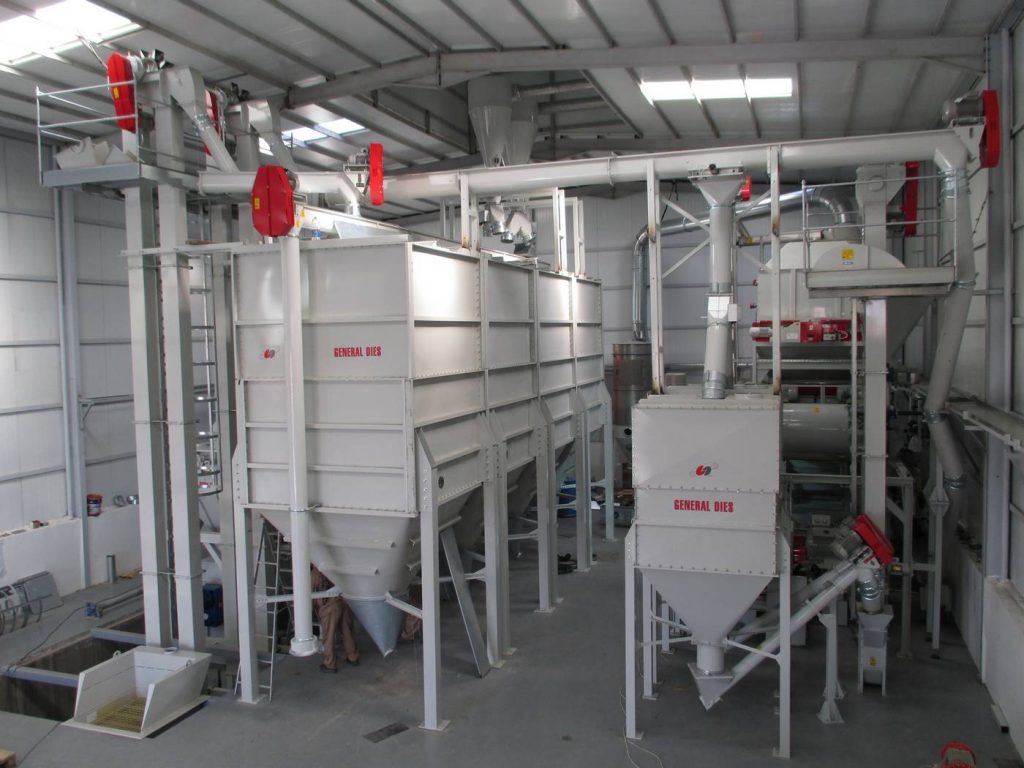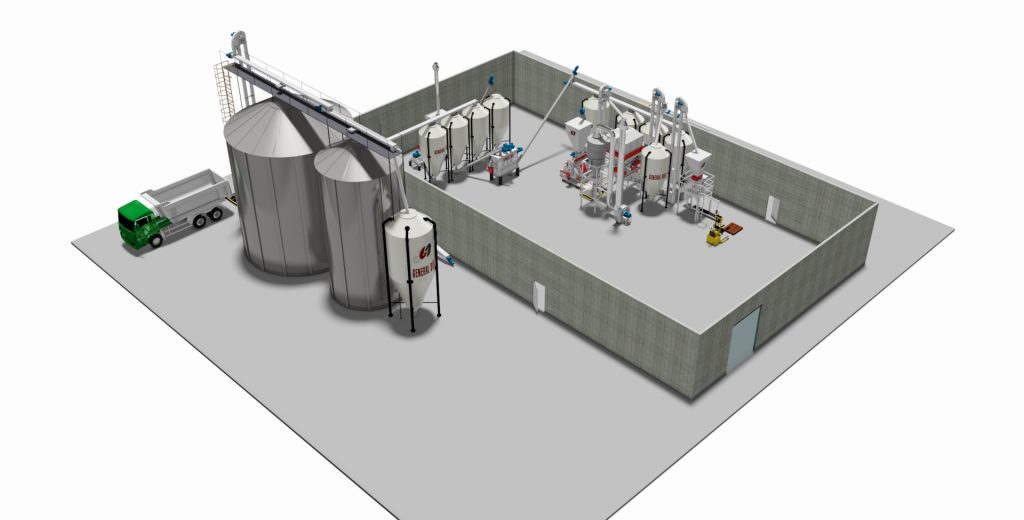Phase A: RECEIVING AND STORAGE ROW MATERIAL
In this initial phase the supply of substances for the desired recipe is determined. Normally a reception pit is foreseen where the raw materials are delivered. Through extraction screws and elevators the substances are loaded in the storage silo.
Phase B: DOSING COMPONENTS
The raw materials are conveyed by a screw to the scale where they are weighed and dosed for the creation of the requested recipe.
Phase C: GRINDING
The material that needs to be smaller, passes through a hammer mill, in order to reach the desiderable dimension.
Phase D: MIXING AND ADDING MICRO-COMPONENTS
The product is loaded in a horizontal mixer where it will be mixed and homogenized for a certain period; in this phase other micro-components can be added, like integrators or additives, necessary to the recipe.
Phase E: STORAGE FLOUR AND PELLETING
The product is now ready and could be stored for delivery or sent to the pelleting line.
The material is entering in the pellet mill passing through the conditioner. Here other ingredients like steam, molasses and grease could be added, before the material goes into the pellet pressure chamber to be transformed into pellets by the die. On the outside of the holes some knives cut the pellets at the desired length.
Phase F: COOLING, SIEVING, DUST RECOVERY
After pelleting, the product is very hot, therefore it’s necessary to cool the product at approximately +5°C in respect to the room temperature, in order to give it the right hardness and the best consistence to store and handle it.
In the sieving phase the product is cleaned from the dust, which is brought back into the production cycle.
Phase G: STORAGE END PRODUCT
The pelleted product is conveyed to the silo for storage before delivery. It can be loaded in a truck in bulk or conveyed to the packaging line.
Phase H: PACKAGING
The pelleted product is conveyed to the silo for storage before delivery. It can be delivered in bulk, loaded on trucks or packed in sacks or big-bag. The machines for packaging could be manual, semi-automatic or automatic, based on the requested production.
 We offer complete plants and pelleting lines for the treatment and production of animal feed pellets.
We offer complete plants and pelleting lines for the treatment and production of animal feed pellets.




